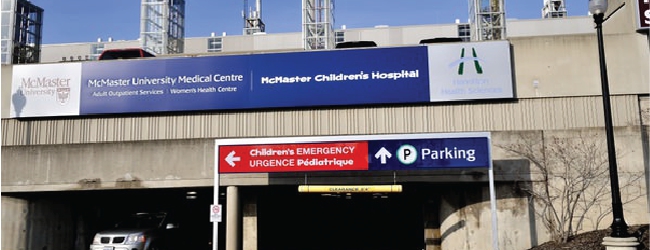
Family of aboriginal girl with cancer can opt for traditional medicine: Judge
By Diana Mehta The Canadian Press
Features Education Profession
Nov. 17, 2014 – The family of an 11-year-old aboriginal girl with cancer has a constitutional right to opt for traditional medicine over chemotherapy, an Ontario judge ruled Friday in what some observers called a landmark decision.
A hospital that had been treating the First Nations girl sought to have the child apprehended and placed back into chemotherapy after her mother had pulled her out of the treatment earlier this year, but its application was dismissed by Judge Gethin Edward.
The decision doesn’t prevent the girl from seeking treatment in a hospital in the future though, and one lawyer in the case said the child had already been referred to an oncologist at a different hospital.
The case in Brantford, Ont., west of Hamilton, saw the McMaster Children’s Hospital take the Brant Family and Children’s Services (BFCS) to court over the issue of the girl’s treatment.
The girl, whose name cannot be revealed due to a publication ban, was receiving chemo before her mother removed her in mid-September to take her to Florida for alternative therapy, which involved herbal treatments and lifestyle changes.
At that point, the hospital asked the BFCS to intervene to ensure the girl continued her chemotherapy but the agency refused, triggering the legal case.
The girl and her immediate family were not in court on Friday, but the decision was hailed by the chief of the Six Nations Reserve, where the child is from.
“I don’t think we’re risking our kids’ lives. Her mother loves her to the world and back,” said Chief Ava Hill. “We’ve been practising traditional medicine, we’ve never stopped, and now we’re just going to do it more openly.”
The court’s decision also sent a message about the right of aboriginal communities to look after their own, said Hill.
“No longer are we going to let people come and take our kids,” she said. “The residential school era has ended, we’re moving on, now we’ve got a lot of healing to do because of that era and we’re not going to let anybody else take our kids anymore.”
The hospital that treated the girl said it remained hopeful that she would return to treatment because without it there would be “no chance of survival.”
“Our goal has always been to provide therapy to save this child’s life. Today’s court decision hasn’t changed that,” hospital president Dr. Peter Fitzgerald said in an interview.
He said the hospital had no immediate plans for an appeal.
A lawyer representing the BFCS said aboriginal rights were fundamental to the case and should be recognized.
“I think this is a landmark case and I think it will ripple at length,” Mark Handelman said in an interview.
“It recognizes the traditional rights of First Nations people to practice their own medicine, secondly it’s a reminder to health practitioners that it’s important to factor into treatment proposals and recommendations the wishes, values and beliefs of the patient.”
Handelman said the BFCS refused to apprehend the girl because it took the position that she was not in need of protection, but rather in need of a treatment decision.
The judge hearing the case concluded in his ruling that traditional aboriginal treatments were in existence before First Nations communities were in contact with Europeans, and were consequently entitled to special protection in Canada.
The ruling means the girl is free to pursue traditional treatment for her leukemia instead of chemotherapy, or alternatively, she is also free to decide to return to chemotherapy in the future, Handelman said.
Indeed, the girl and her family are back in Canada after their trip to the U.S., and a referral for the girl has been made to an oncologist at a different hospital, he said.
When asked if the outcome of the case might have been different if the child had not been aboriginal, Handelman said every case was different.
“It’s impossible to answer that question because both health-care cases and child-welfare cases, every one is unique, every one depends on its own facts,” he said.
“A broader aspect to this case is a reminder to all of us that medical decisions are never made solely on the basis of the best medical result – individual wishes, values and beliefs come into play.”
The hospital was not immediately available for comment but said it planned to issue a statement later in the day.
At least one expert on constitutional rights said the ruling appeared unusual.
“There really haven’t been court decisions like this relating to this kind of care that have favoured aboriginal rights and traditional aboriginal medicine,” said Cheryl Milne, director of the Asper Centre for Constitutional Rights at the University of Toronto.
There had been some cases in the past where a court had weighed in on choice of treatment for children, Milne said, but decisions had favoured medical treatments.
In the case of a family of Jehovah’s Witnesses, Milne explained that the Supreme Court overruled a teenager’s decision not to have a blood transfusion.
“So the religious rights of the child and the family, although a factor, they were overridden by what the court deemed was in the child’s best interest.”
In this case, however, aboriginal rights appeared to have been a “huge factor,” Milne said.
“That would be different than cases involving religions freedom, for example.”
Friday’s ruling could open the door to aboriginal traditions and rights being given more weight in other cases as well.
“We do have a disproportionate number of aboriginal children in the care of the state and many of them are in non-aboriginal homes,” said Milne. “Upholding the aboriginal rights in this kind of a context really also will speak to those kinds of cases too.”
Print this page